Archives for 2017
Ironman 70.3 CDA Recap
From Cairns to Coeur d’Alene I quickly settled into Coeur d ‘Alene life courtesy of a very hospitable local, Curt DuPuis. It’s always a shock to the system when I’m away from my family. Time restraints and fatigue are no longer a major factor and professional athlete life suddenly feels very easy. I don’t think it’s coincidence that I have my peak races often after some time away for a brief training camp. The downside, is I’m generally miserable and miss them like crazy and have a two week max limit of time away solo. I’m incredibly grateful to Monica who is very aware of how hard I find it and has compromised her career year after year to join me for my annual U.S pilgrimage.
Ironman 70.3 CDA is a tough, fair and beautiful event that is really well supported by the local community. One of those rare events where in the middle of the race you find yourself already deciding that you’re coming back the next year.
Andy Potts was the defending champ and the guy I was most worried about for obvious reasons to those that know the sport. After some time off post Ironman Australia it’s been nice to go back to pure middle distance training and see the speed and threshold work pay dividends in gradual training improvements. In the past, Andy climbs really well on long gradual sustained climbs where as I always felt I had the edge on the long sustained descents. So the plan was to bridge the gap to Andy after the swim. Be relatively conservative with the long sustained climb. Attack at the far turn around for the long sustained descents. Then run fast.
Pic- Sue Hutter
The plan kicked off perfectly. I started next to Christian Kemp because I felt he was the strongest ‘swim starter’ in the field. Kempy is one of the more talented guys in the sport but has had a career often held back by injury. I guessed right on his swim start speed and 300m in and Kempy was clear of the field with me drafting in his wake and gasping for air at the intensity. Andy soon joined us, moved past me and gradually took the lead. I hung with these guys until about 500m to go exiting 22 seconds in arrears. A solid swim.
On the bike I closed the gap quickly to the lead pair. Once I got to Andy and Kempy, their speed dropped. I shared the lead with Andy for a while at a conservative effort. The thought being that it’s a tough ride, plenty of time for shenanigans later.
Pic- @Corbinbrands
Enter Matt Hanson. It’s not that I didn’t respect Matt as an athlete, he’s a beautiful runner with a terrific record in Ironman for such a relatively short career. His recent win at the U.S Ironman championships was all class, catching a very tight knit lead group and eventually riding clear of them followed by an incredible marathon. Given the swim prowess of Andy Potts and Kempy, I expected Matt to be further back in the swim and that we had more time. Matt made up his swim deficit quite quickly, catching us 40 minutes into the ride. As soon as I saw he was about to catch our trio, I bumped my power up a lot. My thought being that Matt would have been hoping to recover from his big effort to get to the front and so it was an opportune time to not allow him to recover. Matt surprised me and did the opposite to what I expected. After about 5 minutes he road to the front. Post race he confessed that it was simply to slow the pace back down and get things under control so he could get back to his game plan. A clever move that caught me off guard.
I went back to my game plan of waiting until the far turn to make my move. Unfortunately Matt had exactly the same idea. After watching him complete possibly the widest U-turn possible that only a bloke from Iowa who sits on their indoor trainer 90% of the cycling time could complete, he took off. I waited for Matt to be well clear then bridged the gap to Matt however it took it’s toll as Matt was a man on a mission. We swapped the lead several times and had margin of breathing room to the other guys. My major concern now was what to do with Matt. He regularly runs the fastest split in races and knowing where my running is at currently, I was a little nervous. I didn’t have too much time to contemplate my conundrum as on the final uphill approximately 10 minutes from transition, Matt made another move and pushed to a 45 second margin by T2.
Onto the run and my spirits lifted. I felt good off the bike for the first time in a while, I didn’t have to wait for my back to loosen up before I could really push thanks to my new position on the bike. After 5kms Matt and I were still 50 seconds apart, with no real time change since T2. I figured that now was the time to really try and push as Matt would surely be paying the price for his hard ride. For the next 5kms I pushed, confident I was moving well and I I would bring back at least a little time. Instead I got a split that Matt was now 80 seconds up. That hurt. The splits kept growing as Matt went on to run a 1.11 on a run course with a lot of false flats and turns. I held for 2nd, Andy 3rd and Kempy 4th.
Pic- Curt DuPuis
Of course, there is no feeling like winning but objectively, I was quite pleased with the numbers for a tough course. We’ve resolved my back pain and I feel I’m in a much stronger and aero position on the bike. Things are on track for a September/October peak.
Big shout out to all the Coeur dAlenians.. especially Curt Du Puis (again) and Sue Hutter.
Just got to Boulder, Colorado which is heaven for chronic exercisers. A few weeks until Ironman 70.3 Racine in Wisconsin.
Cheers,
Reedy
Ironman Australia
I can’t tell you how much I love to hear the 3 AM pre race alarm. Like 95% of the other competitors, I lie awake and waiting for the alarm to break the tense silence from about 1.30am on an Ironman race morning and Ironman Australia was no exception. The alarm sound is relief comparable to crossing the finish line. Finally, no more sitting around resting and waiting. No more questioning last minute equipment choices, race tactics or whether I’ve done enough in my training preparation. It’s all done now. Time to go and enjoy the mental clarity and peace that suffering in a race seems to provide.
Port Macquarie put on a cracking day. Light breeze, cool and sunny. Record breaking conditions if an athlete was going to put it altogether. All week I knew Matt (Dixon- my coach) and I had got my taper right. Heart rate was very responsive and short intervals felt effortless with no sign of lingering fatigue. I couldn’t wait to race which is always a good sign that I’m also mentally ready to dwell in the hurt box.
My year so far was a mixed bag. I got a great few weeks training in before the Aussie Long Course Championships wrestling to a victory with a strong ride making up for an ‘ok’ run. From there, time away for a family wedding and a necessary house move made training consistency tricky. Ironman 70.3 Subic Bay went better than expected despite a real lack of training and I was well in contention until 4kms to go against some of the worlds top notch fellas before fading to 3rd place. I convinced myself that starting my specific Ironman build fresh would be beneficial and I think that proved to be accurate as I certainly wasn’t fatigued on race day. However in my final lead up race, Challenge Melbourne where in contrast to Subic Bay I had a buckets loads of training under my belt I was disappointingly average. We expected some fatigue as I firmly believe for most athletes a race 4-6 weeks from Ironman not on your A game can be part of a good Ironman prep, but I was really not even in the same postcode as Appo and Dan Wilson. Confidence was a little rattled as a year prior I had done Oceanside 70.3, also with a 3rd place but with a performance I was very proud of running a good 7-8 minutes faster for a hilly and accurate 21.1kms than the flatter, slightly short half marathon course in Melbourne. My back had been mildly annoying the past 6 months but in the Melbourne cold it was unbearable which became a big concern for the impending 180kms bent into my unorthodox time trial position at Ironman Oz. Still, as the load and the taper progressed my top end was returning nicely and my concerns diminished. All signs pointed to having a solid day out at Ironman OZ.
I have a deep connection with Ironman Australia. Last year was the first race where I think I was truly able completely ignore the result, and the insanity of the distance, and remain in the present moment the entire day. I affectionately call this state of mind my Mark Allen Reed mindset. For non-tridogs that’s a lame reference to a triathlon great who was known for being the zen master while racing claiming an outstanding 6 Ironman World Championships titles. It might not sound like much, but as a hyper competitive guy with a tendency to transform into the notorious ‘Angry Gnome’ on the race course, finding this peaceful mental state was a massive step for me in Ironman racing. Most significantly, the race will always be associated with the loss of my one my best mates, the universally loved Egg Roll, who passed away a week before last years event. I fully understand and support pros pulling the pin in Ironman when it’s not going their way. For most, it’s a very tough way to make a living. You only have a limited number of times you can truly go to the well in an 8+ hour race in your athletic career and finishing on a bad day can limit the chance of earning a pay check for the weeks that follow and claw back some financial return for the months of work. However Ironman Australia is a race I can never DNF even if I have to crawl to across the finish line.
In contrast to last year, I had the perfect start to the swim. The product of perhaps feeling fresh but more likely to do with not being continually dragged underwater by a fellow competitor . I quickly established my position in 3rd place on the feet of Michael Fox who was comfortably in the draft of Clayton Fettel. Very cleverly, Michael let Clayton ease 10-15 metres ahead of him before dropping a sprint hand grenade to get rid of me and surge back onto Clayton’s feet. I had a good idea it was coming when the gap first opened as Foxy is a very strong swimmer who should be able to stay with Clayto. As the gap opened I considered whether I should sprint with Foxy to get across the gap. In an Ironman 70.3 I would have definitely tried to go with the ‘Foxy’ move but successful or not it would have put me well into the red zone. Something I planned on avoiding early on in the day. Training with Clayton on the reg, I know that on the slim chance I could stay in his draft, it would leave me pretty very depleted for another 7 hours of racing. So the plan was to nestle comfortably into the chase pack.
Unfortunately for me, everyone in the chase had the same idea of staying comfortable so the pace was a little more leisurely than I hoped. After 500m of leading, I rolled to the side and started backstroking hoping that the next in line would pull a turn. David Dellow, aka ‘the Double D’, one of the more underrated Ironman athletes on the circuit mainly because he is one of the last of the old school Aussie pros who hasn’t succumbed to endless self-promotion to increase or sustain sponsorship, had a shoulder injury and is also a very savvy Ironman racer. ‘The Double D’ wasn’t going to be caught out spending any extra effort than is essential early on so moved aside also. Nick Baldwin set out in the lead and pulled us all to the weir where athletes jump out, climb and descend some stairs before diving back in to resume the 3.8km slog. In the brief time we were running up and down the stairs the first signs that I wasn’t in my zen-like state of 2016 and that ‘the angry gnome’ was alive and well appeared as I gave a relatively polite verbal spray to the Double D and 2 x Ironman Aus champion, Paul Ambrose to help share the lead and make the swim pace a little quicker. Both Ambrose and I then tried at different times to swim up alongside Nick to give him a break but he didn’t seem interested and kept plugging along beside us, which slows both people down. Nick appeared to actually be getting quicker the longer the swim went so Ambrose and I gave up and tucked back into his draft. Cheers Nick we owe ya.
I worked through transition methodically ensuring I put on my sleeved aero suit carefully avoiding zip blow out, slapped on my wrist based HR monitor and got pedalling. Again, my suspicion that we had nailed the taper was once again confirmed. Legs were good, HR very responsive. Perhaps I was low on training volume as per our usual yearly plan to ensure absolute peak condition later in year but I would way rather be undertrained and fresh then having a day like the Ironman World Champs last year where I was dead tired from the gun and my heart rate wouldn’t budge into even a conservative race zone. I moved to the front of the chase and began a reasonable tempo. At this point I realised I’de made a mistake by deciding to switch to a 28/11 cassette for this event. For non-cyclists that’s a bigger cassette on the back that gives you a wider range of gears. The down side is that it doesn’t give you as many smaller options in your sweet spot race power range. I was finding that for the 4.1-4.3 watts/kg I planned on sustaining I could either pedal 83-85rpm (revolutions per minute) or 103-105rpm but not in the mid 90s which I’ve found most economical for me. The easier gears were fantastic on the climbs but on the flatter rolling sections I couldn’t find the rhythm I knew had worked for my running off the bike most of last year. Quick side note on cadence so any young players don’t think they now have to pedal in the mid 90s- It’s hugely individual. In general I’ve found strong, heavily muscled athletes do better off a lower cadence as it keeps their heart rate down and body temp lower yet their superior strength means the sustained torque doesn’t negatively affect them while lighter athletes with a good aerobic capacity tend fare better with a higher cadence.
Last year, I couldn’t care less about where other people were in the race such was my internal focus. This year, I couldn’t’ reign in the angry gnome and stop thinking about where other athletes were. With no wind on the course and athletes sitting a legal but very advantageous (yes the rule should change to 15-20m as I’ve argued for years but I won’t go into that again) 10m apart/12m front wheel to front wheel, I was getting restless. Clayton Fettel had put in some smart training this year and I was bothered about the time he was putting into us. I wanted to ride harder but I knew everyone behind would be doing it easier sitting in the legally spaced out pace line. I love racing Ambrose because he always races extremely fair and was also spending a good amount of time pace setting however there were quality athletes behind us playing it cleverly as the rules allow. My plan in this scenario was to wait until 120km and then attack and ride the last 60kms strong. However the angry gnome was bashing my pre race resolutions down with a gnome sized baseball bat and by 40km I had done my first attack. I got a gap but ‘the Double D’ pulled it back. Ambrose and I tried again soon after. This was looking promising as we got 100m clear but then the ‘Double D’, with a level of focus and determination I haven’t seen before on the red maned man of mystery, harnessed us back in once more. At this point, I wasn’t frustrated because at least the match burning was happening by the two other guys I figured were the big overall threats.
At the end of the first lap while ascending the famously steep Matthew Flinders Drive, the 28/11 cassette that was making my cadence problematic on the majority of course proved to be very handy on the steepest climb. I looked back at the top of the hill and realised I had a sizeable gap to the other guys in the group. I put my head down and didn’t look back for another 10 minutes. I was finally out of sight and hopefully out of mind of the other guys. With a sigh of relief I found the Angry Gnome’s voice subside and Mark Allen Reed start projecting some peaceful internal vibes as I looked forward to riding the next 90kms doing what I do best, thinking only about myself. Unfortunately ‘The Double D’ had other plans.
About 30 minutes later my back was starting to tighten and I was breaking aero more regularly to stand up, stomp the pedals occasionally and stretch out. A glance back told me that there was a solitary rider slowly making their way back towards me. Initially I thought it was Paul Ambrose jumping across. A welcome thought, as Ambrose can sure ride well when on song but I felt that provided I didn’t explode on the run, I could gain an edge there. Alas, a photographer broke the news to me that it was the ‘The Double D’, the international man of mystery who alongside his triathlon skillset is known among those close to him for his absolutely sensational baritone voice. When ‘the Double D’ breaks into song people and birds a like are overcome and pause and weep in pure euphoria. Despite having the ‘The Double D’ with me, the Angry Gnome didn’t reappear. If ‘the Double D’ had bridged across before, he could do it again as I wasn’t going to be able to attack harder than before as I had included breaking aero every few minutes for a stretch to keep my back functional for the run. It was fairly controlled riding but I’ve learnt in Ironman that from 120km to 180kms you don’t have to do anything too special except keep the power drop off within 10-20 watts of the first half of the ride. Sounds simple enough but I hear from most athletes that they typically have their first ‘bonk’ (a period of hypoglycaemia where athletes have to slow down for a while to bring back their blood sugar levels) and suffer their first significant power drop off. We suffered no such issue. Clayton Fettel didn’t gain any time over the second 90kms and we soon had 10 minutes over the guys with threats such as ‘The Big Sexy’ McDonald and Ambrose now out of the picture.
Into transition, I handed off my Trek Speed Concept giving it one last affectionate pat before it was taken from my loving gaze. I whipped off my aero speed suit, slid into my Budgy Smuggler and superstitiously laced up the exact same pair of Saucony Zealot ISO shoes that I wore the year prior, hoping that the 2016 winning pair would bring me luck. My hydration belt contained my electrolyte and calorie mix in one bottle and four bottles of the anti-cramp formula ‘HOTSHOT’ in the other. Last year I only took one bottle of HOTSHOT which worked wonders until 45 minutes after my last dose and then consistent cramping held my run back about 5-6 minutes over the final 12kms. This year I really wanted to iron out the cramping issues that plagued the marathon last year.
We hit the run hard which I found confusing. Pre-race I had studied ‘The Double D’s’ marathon pacing in other Ironman races. He was extremely consistent at pulling off one of the fastest runs in most events and I felt that he did so through very smart conservative pacing early on in the marathon. Pacing that would have worked well with my plan and how I prepared for the event. Yet this tall, ruggedly handsome man with sensational vocals was flipping my expectations upside down and whipping along at 3.30-3.35min/km pace. That’s a 2hr30 marathon pace! The voices in my head started competing for attention. Mark Allen Reed was peacefully suggesting that I stick to the planned 3.50-4 min/km pace while the Angry Gnome, who manages to fit in 3-4 expletives into every sentence, told me to go with ‘the Double D’. From a cardio-vascular perspective this pace is still well under lactate threshold and so technically within what should be my Ironman range. However as I was soon to learn the hard way, the purpose of pacing is not just to avoid dehydration or an energy deficit from going too hard aerobically but also to protect the muscles from excessive break down that can override your brain’s will to keep going fast in an attempt to limit further damage.
With the far lower average cadence than I was hoping for in my legs from the 180km ride, from the first step of the run I could already feel that my quads were tender. Nothing I couldn’t’ ignore at this point. For 12kms I let ‘the Double D’ set a red hot pace. By 14kms I could sense him faltering. He was having his first inevitable bad spot and had to slow down. At the same time I ran by my son Oscar who screamed support at the top of his lungs sparking the Angry gnome to suggest I attack. With the boost in emotion Oscar provided I couldn’t resist the suggestion and for 5kms I surged. It felt amazing. The Angry gnome was working in overdrive telling me that I was going to smash the record and run a sub 2.40 marathon. A delusional thought completely outcome based rather then keeping my mind in the process of what I should be doing based off how I had trained. I had put a rapid 2 minutes into ‘the Double D’ but by 19kms I was paying for the effort. The surge had depleted precious glycogen stores and I fell into my first and only energy hole for the race that day. Thankfully in training I’ve put myself in this dark hole many times before and know that with a tactical switch to playing defence for a few kilometres, I can come back fine. The ever-calm Mark Allen Reed peacefully brought my mind back into the moment, I slowed a lot to bring my heart rate back down so I could absorb calories and over the next 2-3kms took every aid station very slowly guzzling coke to bring my energy levels back so that I could get back to a decent pace. The Double D pulled back some time but I still had a reasonable lead. My energy returned and I was back on track.
Energy was back but the discomfort in my quads was becoming intense. Last year I had stuck to a different run technique to my natural style involving a lower leg carry, higher cadence and more shuffle-like style to avoid breaking down the leg muscles too much and make it a non-issue later into the marathon. This run technique is possible to sustain until I go any quicker than 3.50/km and then I have to return to my more bounding Ironman 70.3 technique. Athletes such as Craig Alexander and Andreas Raelert at their peak managed to maintain a beautiful gliding bound run style throughout the whole marathon however they also did 150km + run weeks in their Ironman preparation likely making their muscles more resilient to the persistent pounding. Or perhaps they’re just mentally stronger and can ignore the pain. For my ego’s sake I hope the former.
25kms in and with every foot strike and my quads were screaming at me more and more to slow down. Cursing myself for the mis-pacing I knew that if ‘the Double D’ held together a reasonable pace he was going to take the win. He soon zipped by and I knew from experience that I couldn’t’ override this muscular pain and the victory was lost unless the Double D had an unlikely meltdown. Strangely it didn’t bother me too much at the time as I my mind was far more preoccupied with how I was even going to make it to the finish line. Thinking about my family and Egg Roll always does the trick and I kept ticking the legs over rewarding myself with a short walk at each aid station using the temporary pain relief as a reward for not walking in between aid stations.
Thankfully the pace of our first 21kms meant that even with a very average final 15kms my overall run time was still respectable and I held onto 2nd place with a mixture of utter relief, pride that I didn’t give up and flashes of disappointment that I had gone a little worse than last year. I wish my triathlon progression constantly moved in a smooth linear direction with improvements every event but it never has. Overall the improvement has always head in the right direction but there’s been plenty of backward steps along the way. In the past the backward steps often help me change things to take two steps back in the right direction. The pacing had also left the Double D suffering for a big portion of that run yet he held it together cranking out a 2.48 marathon to take the win and the course record from last year in a seriously impressive performance. Clayton Fettel bounced back from some dark places early in the marathon and came in 3rd resulting in the same podium but a slightly different order from last year.
Immediately after the race, as per my Instagram post, I really wasn’t disappointed. I had rolled the dice with ‘the Double D’ to do something special and it hadn’t worked out. Of course upon later reflection I realised that rarely do athletes do something beyond what they’ve trained for and mentally I had wandered from the attitude that brought me success last year. This year I’ve been more focused on winning and worrying about other athletes then staying in the moment and only thinking about what I needed to be doing right there and then to maximise my performance.
Mixed Emotions post race..
Some big lessons going forward. For further Ironman events and Kona, I’m going to work far harder to better condition the muscles to match my aerobic ability. My key sessions were based around pace and what other athletes do to prepare for Ironman events rather than using my heart rate relative to lactate threshold to train my key sessions which would result in much faster running in training and hopefully result in greater muscle resilience.
Some positive notes starting with my cramping issues from last year. I didn’t lock up once with cramps like the year prior so I’m very confident HOTSHOT has largely solved my cramping issues over the Ironman distance. Another potentially huge move in the right direction brought about by finally getting fed up with my back issues was finally trusting someone to give me a bike fit! A week after Ironman Australia I visited Ryan Williams from 3D bike fit. Drastic changes to my bike position ensued. I was sceptical it would make much of a difference but after averaging out several testing sessions we achieved a whopping 8% power increase for the same HR while moving into what should be a far more aero position. Of course an 8% power increase won’t result in 8% faster times as the resistance of air increases exponentially the faster you go, however there still should be some measurable time gains. I also feel 5 years younger with no back tightness since switching up the position.
From here, I’m switching back to pure Ironman 70.3 training for Ironman 70.3 Cour D’Alene, Ironman 70.3 Racine and Ironman 70.3 Philippines before starting my build for the Ironman World Championships. After viewing the Ironman 70.3 St George results where Alistair Brownlee and Lionel Sanders went insanely fast on what I consider one of the toughest courses I was a little bit despondent as to how the hell I was ever going to compete against these guys at the Ironman 70.3 World Championships while properly preparing for the Ironman World Championships. Given the two events close timing and increasingly different style of training required for both events it’s very rare athletes pull off performances at both championships at their maximum potential. My new bike position has given me a glimmer of hope and a boost in motivation that success at both world championships might be possible. After contemplating just racing Kona, I’m now fully committed to both distances. After all, Australia needs an underdog there to potentially re-create another ‘injustice’ for the phenomenal Lionel Sanders.
I’m so incredibly grateful to my sponsors and team. Big thanks Saucony, Trek, Bontrager, Alaska, HOTSHOT, Roka, Flight Centre Sports and Events, Budgy Smuggler, Transition Cycles, Rudy Project, my manager Evan Gallagher, coach Matt Dixon, extended family and most importantly Monica.
Ironman Australia Equipment Checklist- Confessions of an Over-thinker.
This is 1 of 2 for blogs regarding Ironman Australia. This first blog is a pre-race tech/equipment blog for the fellow gear geeks out there or for those interested as to how truly neurotic I can become before an important event. I mean it when I say to those readers who are not interested in triathlon equipment to save yourself losing precious minutes of your life and stop reading now. Please do me the honour of reading my second blog which will hopefully be of more general interest, completely over analysing my preparation and mental state for the lead up and during Ironman Australia if it goes poorly, or under analysing if I do well.
Professional triathletes tend to fall into two categories – ‘over thinkers’ and ‘under thinkers’. Both can have success and both can derail races either because an athlete does not considering their equipment choices for an event enough or as I’ve often done, completely over considering what equipment I’m using and tinkering to the point of wasting way too much energy and causing unnecessary stress leading into an event.
I’ve had a long running joke with Tim Berkel about how many times I can post the same picture pre-race of all my race gear laid out on Instagram, the social media platform that destroyed humility. Strangely, a pre-race gear spread pic seems to be well ‘liked’ even when it’s almost a complete replica of a few weeks prior. Despite that, I can’t bring myself to do the same shot for the 15th time so I thought I would do a quick write up with what I’ve chosen to use at Ironman Australia, delving a little into my insanity behind some of my decisions. For those that read pros blogs about sponsored items with scepticism I can understand that, however as with prior blogs, if I don’t like an item a sponsor of mine makes, I simply do not mention it. Also, not all the items below are sponsored items.
Saucony Kinvara 8, Freedom or Zealot Iso?
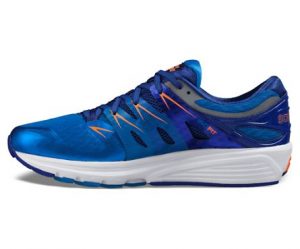
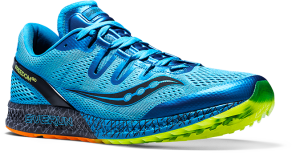
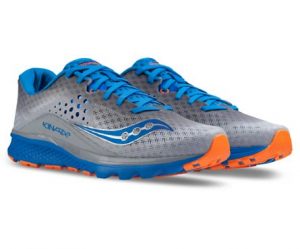
I’m on the low end of milage for a pro triathlete as I feel that for me, consistency pays greater dividends over sidelining injury. Because of that and minimal pronation for a natural biomechanical cushioning, I require more cushioning then what an athlete with consistent 100km + run weeks behind them might be able to compete in.
The Freedom was a late entrant to the shoe contenders. It’s unlike any other Saucony shoe I’ve run in with a super minimal sock-like upper and a very cushioned but fairly sole. I just didn’t have time to give this shoe enough testing on my long runs so I ruled it out purely because the shoe and I simply haven’t built up enough trust just yet. One thing I did notice was that while a lot of the Saucony shoes list the drop (forefoot to heel height differential) as 4mm in practice this drop can range quite a bit due to the cushioning of the sole. For example the Freedom in practice feels much closer to 1-2mm drop while the Kinvara feels closer to a 5-6mm drop. For now I’ll keep using the Freedom for my slower runs until our flirting has progressed to next base.
The Kinvara was the shoe that got me hooked on Saucony before we began working together several years ago while the Zealot Iso is a shoe that I first started for my higher milage weeks leading into Ironman Australia last year. Now I’m torn as to which shoe I prefer for longer duration sessions. The Kinvara is slightly quicker and responsive while the Zealot Iso a little more plush taking the sting out of the latter kilometres of the marathon. I completed several 2+ hour runs in both. I prefer the Kinvara for the first 25kms but after 25kms on tired legs, the Zealot really comes into own for comfort. Obeying the principle of sticking with what has worked I’ve decided to go the Zealot Iso again for Ironman Oz.
Trek Speed Concept 9.9
The time trial bike design that so many other companies are still trying to catch up to and replicate. It’s aero, adjustable, light and looks stunning especially with Project One customisation. It’s the engineering details that really get me drooling; Aero integrated brakes that actually work and are easily adjusted, a front end cockpit with literally hundreds of set up options and triathlon specific storage with no aero penalty. It’s been love since first ride. A love that has not faded in the slightest.
Draft Box Contents 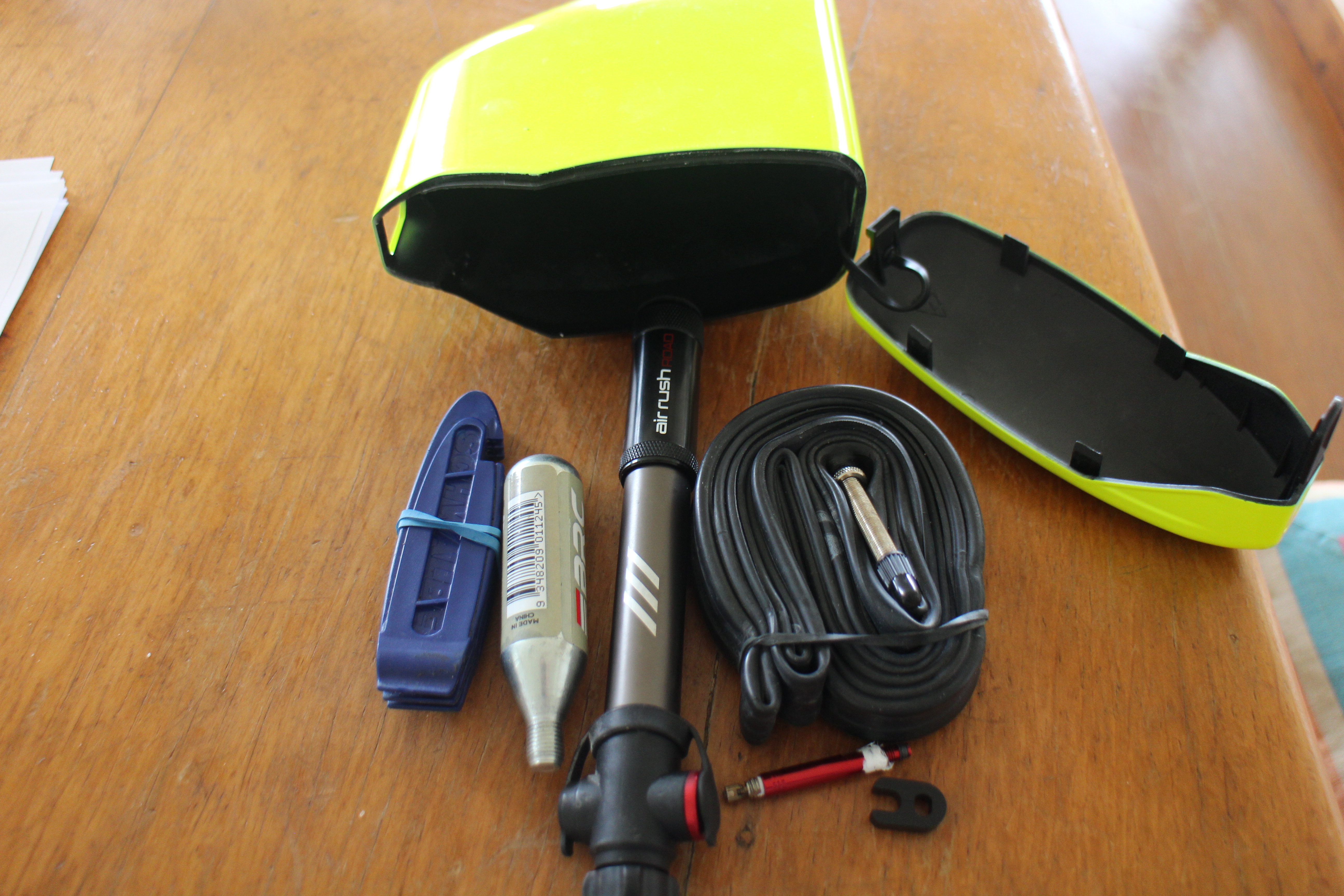
- Bontrager Air Rush Road Co2 Pump
- Co2
- Spare Tube
- Tyre Levers x 3
Groupset:
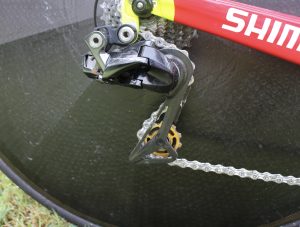
- Rear Derailleur- Shimano Dura Ace 9100
- Pulley Wheels- Ceramic Speed
- Bottom Bracket- Ceramic Speed
- Chain- Shimano Dura Ace with Ceramic Speed Coating
- Shifters- Shimano Dura Ace 9100
- Pedals- Shimano Dura Ace 9000
- Cassette- Shimano Dura Ace 9000 28/11
- Crankset- Shimano Dura Ace 9000 55/42 chain rings with Quarq Elsa RS- 162.5 length cranks.
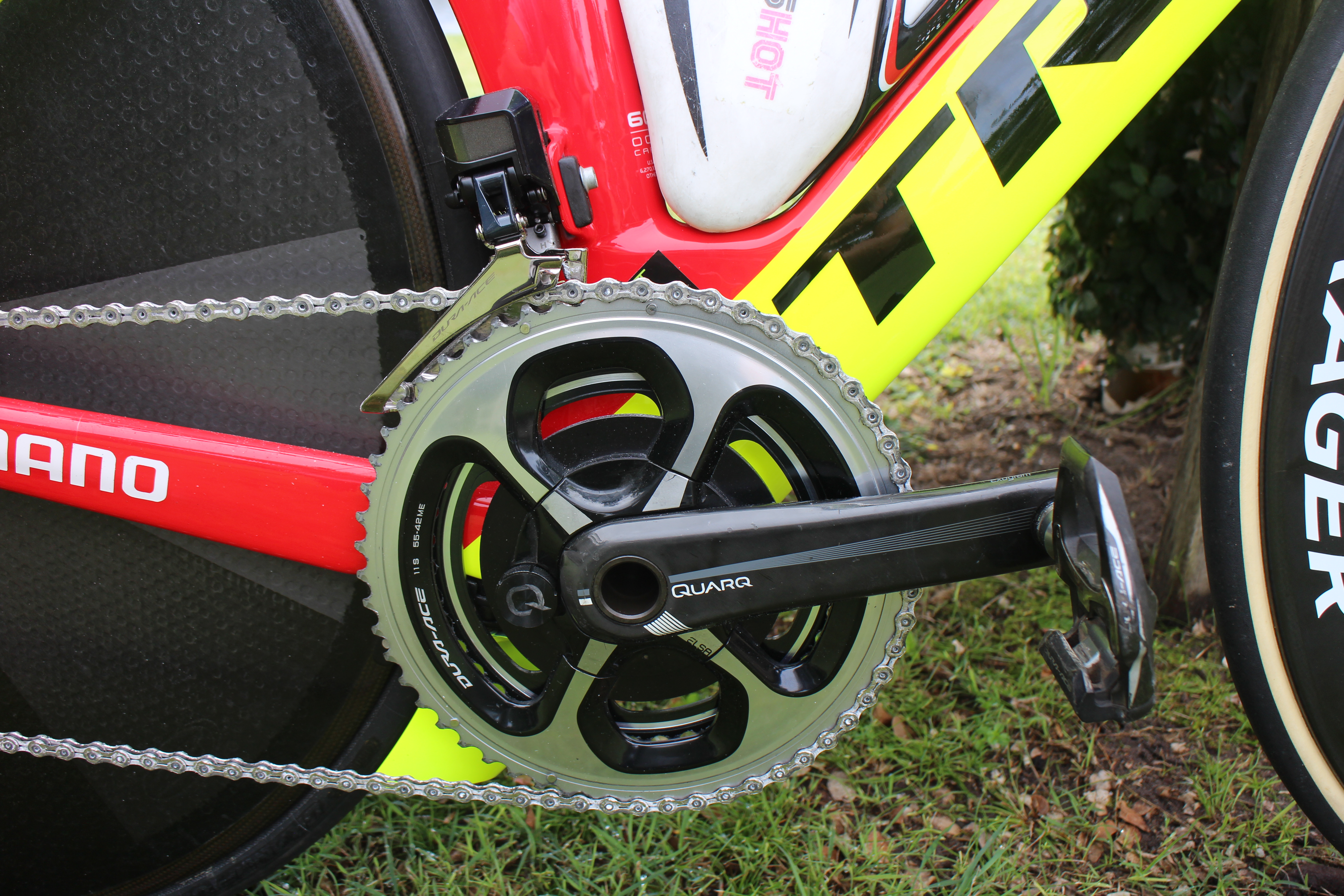
Budgy Smuggler, Sleeved Suit or Sleeveless Tri Suit?
Saucony have had Louis Garneau make several suits as options for racing the past few years. From other people’s aero testing the sleeved suit seems to test somewhere between 3-6 watts faster then the sleeveless options. Although I’m not sure the aero testing matches up in the real world where people come out of the swim and the sleeved suit is wet and wrinkled. Still, a potential aero benefit is available. The main reason I will ride in a sleeved suit is primarily for warmth. Port Mac can be pretty chilly until about 9 or 10am in May and a cold gnome is a slow gnome.
A few might recall when I gave left jab at Lionel Sanders for wearing Budgy Smugglers in Kona. I did this for a few reasons. He is a very emotional guy when it comes to triathlon and I thought it might really wind him up and create some good social media banter. He failed to fire back as he promised so it wasn’t as fun as it could have been. The second reason is where I as I feel like I can only truly peak for 3 races a year, Lionel’s energy, determination or perhaps straight up talent means he seems to be incredible for nearly year round. He doesn’t need to dress half naked like me to gain extra value for my sponsors. The third and most important reason is that I believe in hot races the minimal man bra offers a significant advantage on the run as it’s much cooler to not have the thighs covered in material and if there was anyway of shooting down any other athletes from also gaining that advantage then I’m going to try me best to do so. So, given the marathon could be quite warm, I’ll be doing a full change in transition into smugglers and a tri top.

Nutrition
I don’t want to give away too many secrets here as I don’t have a current sponsorship relationship with a nutrition company and after a lot of issues in the past, I’m really hoping that my nutrition strategy that’s been working really well for me in races and training continues to do so. It took a lot of 6-7 hour sessions before Ironman Australia last year to work out what works for me so I don’t want to give away that information for nothing. Additionally what works for me might be very different as to what works for you as everyone’s gut and caloric requirements are highly individual largely depending on how efficient the athlete is as utilising fat for fuel at sub threshold intensities.
On the run in particular, I experimented with all different concentrations of calories, electrolytes and quantities. What I did find is that relying on my thirst response to have successful long runs at race pace off the bike does not work for me as by the time I get really thirsty I’m already litres down on where I seem to be able to maintain the correct intensity. I’m either not thirsty at all until it’s too late and then I’m so thirsty later on that I shut my absorption down my having too much too quickly. So, I’ll stick to a schedule that I’ve found has worked in training and not rely on my thirst response as many respected sports scientists recommend.
With a particular unintentional positive doping test of a triathlete quite recently, I’ve become even more careful with what supplements I take. I pay full price for and have taken First Endurance Multi V Pro during this preparation. Unlike many multi vitamins the absorbability of the vitamins minerals is in an optimum form. It’s not cheap but quality rarely is. Touch wood, for the first time, I haven’t been sick once this Ironman prep aside from some food poisoning for a couple of days. Of course this could coincidence but worth mentioning.
As a side note, I’ve always argued for life bans for athletes for clear cut cases of cheating but now I also would really push regulators to have much stronger punishments for food and sports nutrition companies who’s products are found to have other ingredients in them other than what’s disclosed.
HOTSHOT
My battle with cramping is well known. There are many potential causes with two common causes including an electrolyte imbalance and straight up muscular fatigue. Ultimately though all causes lead to the same issue; an overstimulated nervous system that causes misfiring signals to the muscles. Preventing and treating the symptom of this; cramping, is where HOTSHOT is really something. An electrolyte imbalance is an easier one to solve. 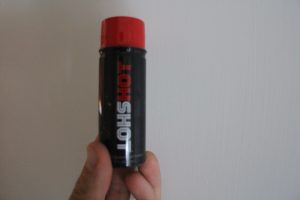 Conditioning your muscles to the required load of Ironman racing is more difficult because we are limited by how much training we can absorb without getting injured, sick or overly fatigued. Last year I first started cramping at 25kms despite sticking very diligently to my hydration and electrolyte plan.
Conditioning your muscles to the required load of Ironman racing is more difficult because we are limited by how much training we can absorb without getting injured, sick or overly fatigued. Last year I first started cramping at 25kms despite sticking very diligently to my hydration and electrolyte plan.
I had one bottle of Hotshot with me which I consumed. Within a minute all cramping ceased and I was able to run another 9-10 kms cramp free before the HOTSHOT effect seemed to wear off and I was forced to stop several times in the final few kilometres. So my simple adjustment for this year that will hopefully allow my final 10kms of the run to more in line with the my first 31km pace is that I’ll take several bottles with me on the run course. I’m yet to find anything that is as efficacious at keeping my overexcited misfiring nervous system settled down.
Breakfast
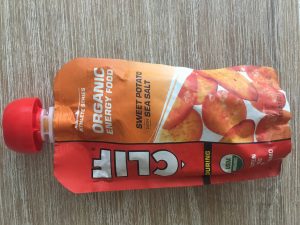
Roka Maverick X Wetsuit and Roka R1 Goggles
Hands down, or should I say with arms up (jajajajaja), easily the best wettie I’ve worn to date! The only wetsuit I’ve been able to wear the correct small size and not feel like my stroke is restricted.
In the same way in which Roka designed the Maverick X in a different way to everyone else, they did the same with the R1 changing the angle of the lense to greatly improve a swimmers upward range of view. Perfect if you’re like me and chasing feet the whole swim.

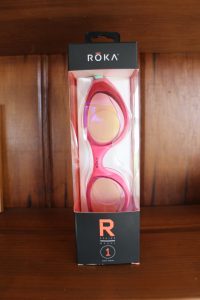
Bontrager XXX Road Shoes VS Aero Tri Shoe Vs Hilo RXL
I flat out love the XXX road shoe. I train it when I’m on my MTB, cross, time trial or road bike. I did race the Hilo RXL for quite a few races last year to get maximum seconds out of transition. A great tri shoe but tri shoes just never quite have the same feel as a road shoe in my opinion. Bontrager kindly made me a prototype aero shoe that I rode at Oceanside 70.3 last year and really liked and will likely use for Ironman 70.3 Cour d’Alene in June. In the end for 180kms of pedalling I’ve chosen comfort over aerodynamics and a super fast transition.
I did decide to change the fastening system to an elastic loop for a quicker transition. I consider this a stroke of genius while everyone else thinks I’ve ruined perfect shoes. The rubber band fastening works for me because the shoe fits so well I could almost ride it undone but I wouldn’t recommend you trying it with your pair at home. Point of information, these shoes come with a solid price tag, however they’re really built to last. This shoe is two years old, has completed 10-15 hours of cycling each week and been dragged through a lot of transitions and is still going going strong. It’s a worth every dollar.

Position
As a kid I rode my Dad’s MTB to commute around . Then in my first 3 years of triathlon I rode an oversized road bike with clip on tri bars. I learnt to ride a very slack seat angle because of always being on bikes too big for me but then continued to do so even when I was given frames the correct size. For a long time I just ignored advice because it was working. However bike fit experts I’ve talked to tend to agree that I’m riding solid in spite of a bad position certainly not because of it and with my back increasingly giving me grief and the cycling continuing its trend of persistently getting faster I’ve finally decided to start taking some advice on my position and have a bike fit scheduled with Ryan from 3D bike fit next week and then will follow up with Trek’s bike fit gurus ‘Cylcologic’ in Phoenix, Arizona later in the year. Don’t get me wrong, the ‘car park bike fit’ conducted on Instagram was a small step in the right direction but the time has come for me to get a hell of a lot more professional in the bike fit department.
Wheels and Tyres..
Wheels and tyres are my thing and where my ‘overthinking’ can run rampant. Some meandering before I get to my deliberating decision.
Weight Does Matter: Some companies will have you believe that weight no longer matters. The marketing convinced me of this opinion too until I noticed that on a lot of the hillier courses, in particular the 2015 Ironman 70.3 World Championships, it was the heavier triathletes who counter-intuitively rode the big climbs much more successfully than the smaller guys. The reason was perhaps at least partly because a time trial bike + 3-4 bidons of water + disc wheel+ spare is a hell of a lot higher percentage of a small athletes weight than a bigger athlete.
The common thinking is that weight only really matters if it’s a summit top finish because the extra weight provides an equal advantage on the descent. This isn’t true as regardless of your weight, riders are often limited to how fast they can go down the hill by the technicality of the descent or even if the athlete can pedal the downhill strongly, the high speed means that aerodynamic drag becomes the exponential limiting factor on speed so weight is less relevant on the descent than on the ascent.
My suspicions were confirmed in my own head when a blog at Terrain Dynamics, the creater of the ‘Air Hub’ of which I’m a big fan, more eloquently explained the above. Check it out here- http://terraindynamics.com.au/the-lab/the-math-doesnt-add-up
Why then, do the best climbers in the pro peloton tend to be extremely light riders? It’s a tough one to answer but my best bet is that these riders have the best power to weight ratio of the peloton that even overcomes the extra percentage of bike load a lighter rider has to take up hill. Which explains why many of the top climbers also can be very strong time triallists. So for SOME courses, weight still matters especially for smaller athletes while, for bigger athletes I wouldn’t be as worried about a half kg here or there.
How does this relate to wheels, well, perhaps to seemingly contradict myself, while Port Macquarie has a few short steep climbs, the majority of the course very moderately undulating and the road surface about as rough as you’ll race lending itself to the benefits of a wider contact patch that clinchers can provide on wide rimmed wheels. So saving 300-500 grams via a lighter wheel set such as the Bontrager Aeolus 9 tubular rear and 5 tubular front is likely countered by the clincher benefits.
I’m weird enough to bother doing rolling resistance testing of all my potential race tyres on my rollers. For Port Mac I was undecided as to whether to run tubeless, tubular or a clincher set up. I’ve tested enough tyres that I know out on the road that more and more tyres are joining the ‘fast crew’ that all roll pretty similarly however there are lot of other differences to be considered beyond how fast they roll before making your choice including including grip, durability, puncture resistance and more importantly for triathletes than cyclists- their aerodynamic characteristics.
‘Continental’ have stuck to their guns that tubeless tyres are not a necessary move in road cycling while most of the other tyre companies including Bontrager, Schwalbe, Hutchinson and now Vittoria are offering tubeless options. Continental, As a German company likely riding on silky smooth German hot mix are not considering us poor Aussies who after riding on Aussie roads are gluing teeth back in post ride. I really enjoy riding tubeless tyres in training, as I can run 60-70 psi without issue on really bad roads and drop even lower if I decide to mix in some off-road terrain. All that being said, I soon ruled out running tubeless at Port Mac because if the sealant doesn’t plug a puncture, it’s much harder to replace a tube then with it’s traditional clincher cousin.
To make the choice more difficult I’ve come across a tubular option that was quite a bit faster than anything I had tested. Slightly irrelevant information but typically to get a clincher and tubular tyre of the same tyre to match up in rolling resistance you need to run a 25mm tubular to match a 23mm clincher because the clincher, especially on a wider rim has a much wider contact patch.
In other words it’s effectively a much wider tyre than what it is specified to be. However this particular 23mm tubular was faster than even the fastest of the 25-28mm clincher tyres I’v tested! The results didn’t match up with other people I know of who test tyres but that’s not uncommon. Particularly among cotton casing tyres there can be some variation in tyre performance due to tyre construction, gluing procedure and the type of glue used. I was intrigued. Perhaps I had stumbled across a rogue beauty as I know other testers have found where an individual tyre stands apart even from other models of the exact same tyre. I even glued the same tyre to a different wheel and it was still faster than anything I’de trialled. I couldn’t resist doing some field testing and much to Berkel’s dismay I enlisted him to help me do some outdoor loops on a Port Macquarie like roads swapping wheels and recording times at a set power.
As I often find with field testing, the results were not nearly as significant as I imagined. The tyre was faster but after 80 minutes of testing it was not convincing enough to have to use it. Importantly I did notice, that I found my usual clincher set up felt the vibrations of the road a lot less at the same pressure. Over 180kms that extra comfort would be important. So given my concern of punctures at Ironman Australia and wanting to minimise vibrations, I’ll run a clincher set up and again choose comfort over speed. Of my clincher tyre selections I’ve gone for a set up with reasonable puncture resistance. While there are faster options I would use in other races for this event I would prefer to not risk wasted time dealing with a puncture. Of course that’s no guarantee I won’t get one.
Fear not old school racers, tubulars certainly aren’t dead. Hilly races with smooth surfaces and low cross winds which are all conditions where tubulars excel, I’ll be back on a tubular set up.
Depending on the forecasted wind, I’ll run an Aeolus 5 or Aeolus 7 front wheel. In the wind tunnel the stronger the cross wind/ higher yaw angle, the greater the aero benefit for a deeper front, however in practice, the greater the cross wind the more energy is spent keeping your bike in a straight line which quickly trumps the aero perks and shallow becomes a smarter move. Both wheels are very stable for their depth and combined with silky smooth DT-Swiss hubs I’ll be surprised if anyone can produce valid testing showing faster wheels of the same depth.
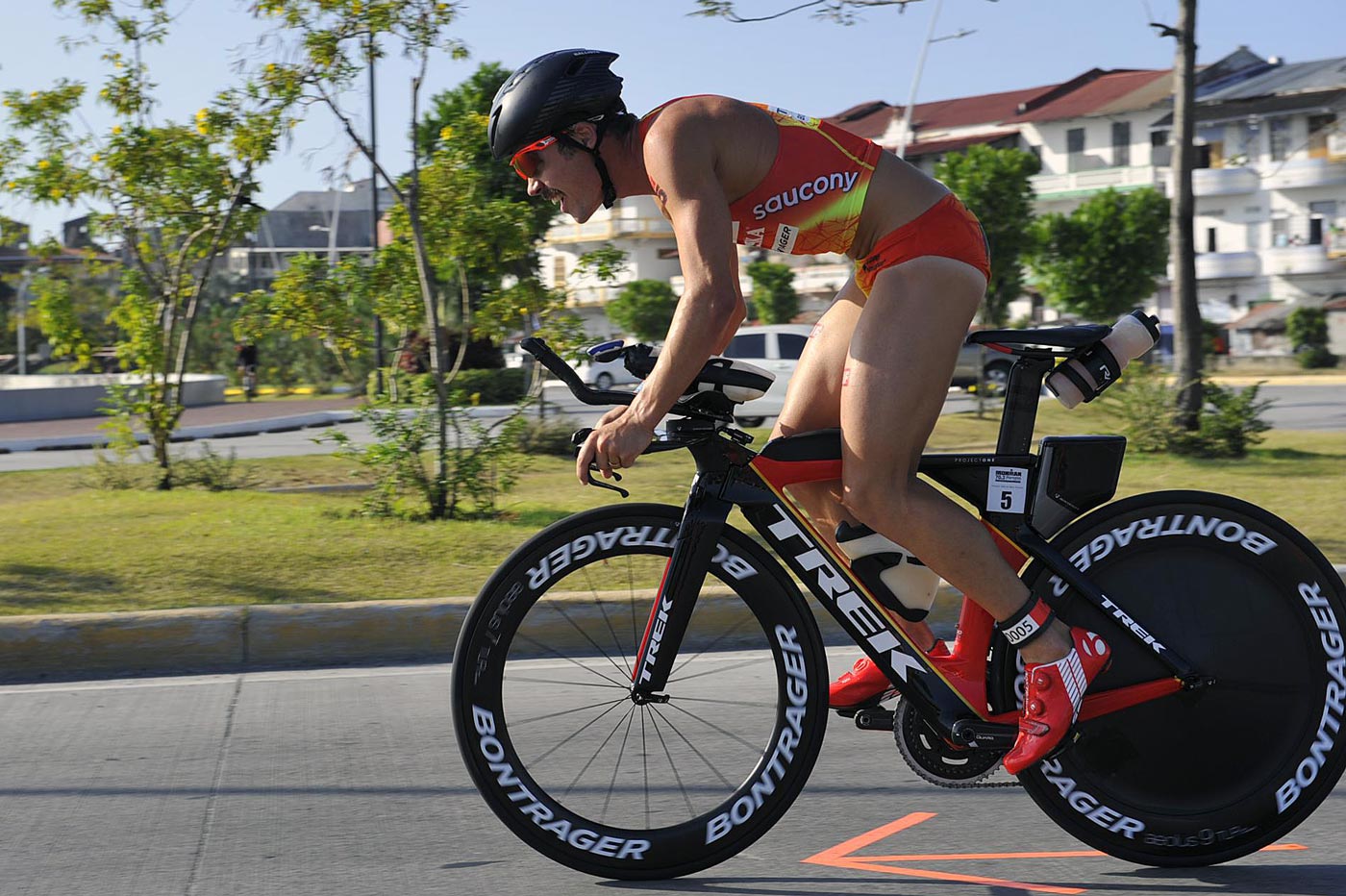
Helmet- Bontrager Aeolus or Bontrager Ballista?
The full time trial styled ‘Aeolus’ is faster in a certain fixed position. If was a pro tour rider completing a 20km TT this 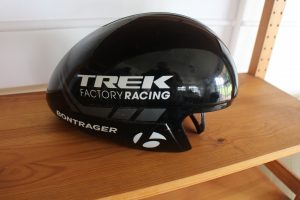 would be my go to. Additionally I’ve worn it in races primarily to stay warmer rather than in an effort to find free speed even though a few watts are available.
would be my go to. Additionally I’ve worn it in races primarily to stay warmer rather than in an effort to find free speed even though a few watts are available.
However the road helmet styled Ballista is aerodynamically versatile in a range of positions. It’s comfortable and 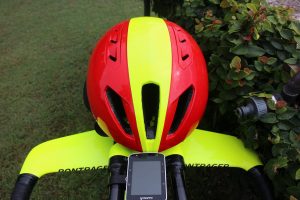 breathes superbly. An easy choice over 180kms of riding. Here is some independent testing proving it’s the business- http://www.bikeradar.com/au/road/gear/article/best-aero-road-helmets-tunnel-and-road-tested-44719/
breathes superbly. An easy choice over 180kms of riding. Here is some independent testing proving it’s the business- http://www.bikeradar.com/au/road/gear/article/best-aero-road-helmets-tunnel-and-road-tested-44719/
Hat- HOTSHOT Full vented trucker.
I asked HOTSHOT if they could get made a trucker that was full mesh and they delivered. Hard to get better breathability in a hat then that.

Sunglasses- Rudy Project Tralyx
I’ve been in Rudy Project since my 2nd year as a professional. The Tralyx stands out for me as their best time trial sunnies because of the adjustable nose piece that allows the sunnies to sit a little higher than you would have them running providing a full range of view without having to bring your head too far out of an aero tuck. Onto the run and a quick pinch of the nose piece and they’re sitting on your face normally.

Anti-Chafe
I get a lot of emails on this..The best that I’ve tried is Squirt Barrier Balm or Ruby’s Wax. Apply liberally and include some in your special needs bag for emergencies.
That’s about it. If you’ve made it this far without falling asleep and are racing on Sunday, all the very best!
Ironman 70.3 Thailand
Racing motivation was not particularly high to be honest. I rarely tire of the training especially at this time of year when the load is moderate, the weather is awesome in Australia and I’ve got great friends back from the U.S to train with. However starting racing in January in Panama and travelling to so many races in a very busy year had left my desire to simply be at home with my family at an all time high. The one upside of bombing out in Kona was getting a lift home with Michi and Andi’ Raelerts brother, who told me that Michi was racing Thailand 70.3. I knew much of 2016 had been rough on Michi as he dealt with illness but he was back on track with clear improvements every time he raced over the past couple of months and it sparked my motivation to knuckle down and focus on getting into good shape for one more race so I didn’t cop an arse whooping from the 2 x Ironman 70.3 world champ.
As soon as I arrived in Thailand, any misgivings about more travel disappeared. My fourth time here and my love for the place only grows stronger. With Sunrise Events looking after the athletes racing the way they’ve become notorious for, the Thai people, amazing food and hanging out with some great friends it turned out to be one of my more enjoyable complete race experiences of the past few years.
I had been a little bit frustrated with my cycling since September, unable to hit the numbers I expect of myself. So, in preparation for this race, my coach, Matt Dixon and I implemented a 2013/2014 strategy that really bolstered my cycling back then. The major premise of which involves dropping my run volume a lot. As expected, dropping to 30-40kms week of running my cycling bounced back really nicely and I knew that that my race tactics could once again revolve around a very hard bike leg.
I had a great swim, exiting the 1.9km swim in 22.30 with Eric Watson towing us a long and then headed out onto the ride with Michi Raelert and British Olympian, Stewart Hayes. Stewart suffered a puncture in transition before the race start and the tube must have been pinched on re-installation as he was left behind waiting for a wheel change. Michi evidently had the same strategy as me as we quickly moved away from the field with reports of a 4 minute buffer by 20kms to the chasers who were being led by Matt Burton and Tim Berkel. Berkel had suffered a rough night having eaten something that didn’t quite work well with his Western gut and was starting the race already very dehydrated. I knew it was going to be a really tough ask for him to be competitive at the front of the race. Michi and I kept pushing the pace for the entire first hour. By 50kms it was clear it was a two man race and so we backed off the gas slightly to keep something in the tank for the hot and humid half marathon.
Michi belted through transition at rocket speed. I was unsure whether it was appropriate to strip down to my Buddy Smugglers underneath my suit given the Thai people are still mourning the loss of their king. Michi’s transition made the decision easy and I headed out still in the ITU style suit that I had ridden in. It was going to be hot but I couldn’t risk losing any more time in transition. I did take the time however to ensure I took my Clif Bar hydration and nutrition mix with me as I knew that riding the first hour as we had would make for a tough half marathon especially given the intense humidity. In previous races against Michi I had belted the first 5kms trying do damage early but it had never worked. He has great top end speed and it didn’t seem to damage the rest of his half marathon like many other competitors. So this time I was quite content to sit 20-30 behind Michi and ensure that I steadily ingested my calories and hydration. I knew Michi and I both weren’t going to be at our running best given he was still building back his run milage while I was very much winding mine down. I figured my best strategy was just to be smart and play defensive triathlon rather than be the aggressor. It waited for signs of weaknesses and after the first turn around I could see in Michi’s face that he was hurting. At about 5kms I closed the gap and put in a strong 2.5 kms to gain a buffer of approximately 100-150m.
For the rest of the run, I too was really suffering out there. With the humidity eliminating evaporative cooling and greedily sucking much of the available oxygen out of the air it was a tough slog for everyone racing. In the final couple of kilometres I started getting adductor cramps. I had to slow a lot and take in my anti-cramp formula. The cramps dissipated and I was able to get going again but Michi was getting a second wind and closing in the gap. In complete relief I crossed the finish line with a 15 second margin in yet another too tight for comfort result of which lately, I always seem to be involved in.
It was a terrific way to finish the year. The tougher the race the greater the level of satisfaction when it’s all done and dusted. Thank you to the Sunrise team and to the Ironman Asia Pacifc team for another first class event.
To my sponsors and team it’s been a dream year, only possible because of your support. I’m incredibly grateful. Thank you Saucony, Trek, Bontrager, Alaska, Roka, Clif Bar, Flight Centre Sports and Events, Rudy Project, Shimano, Monica, Evan- BPM-Sport, Matt- Purplepatch Fitness.
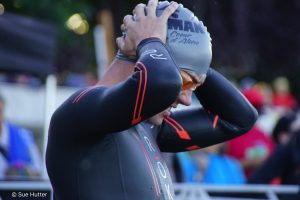
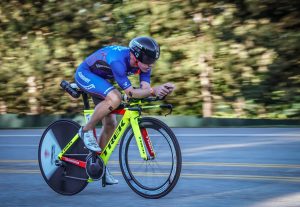
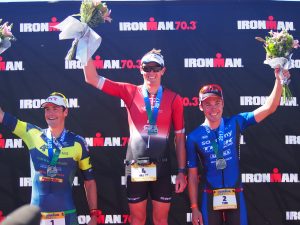
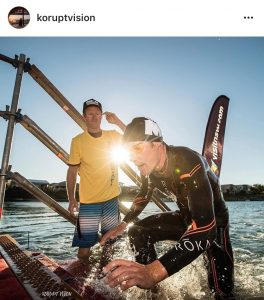
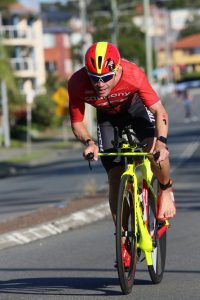
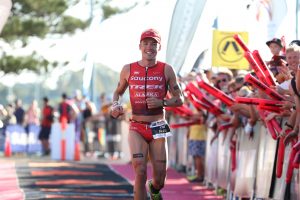
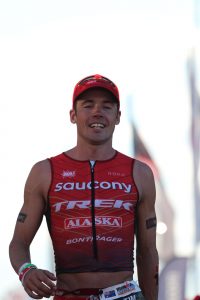
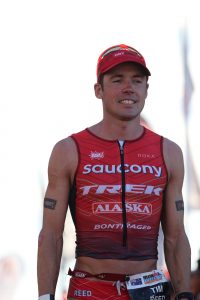
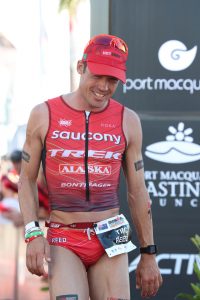
 Please contact:
Please contact: